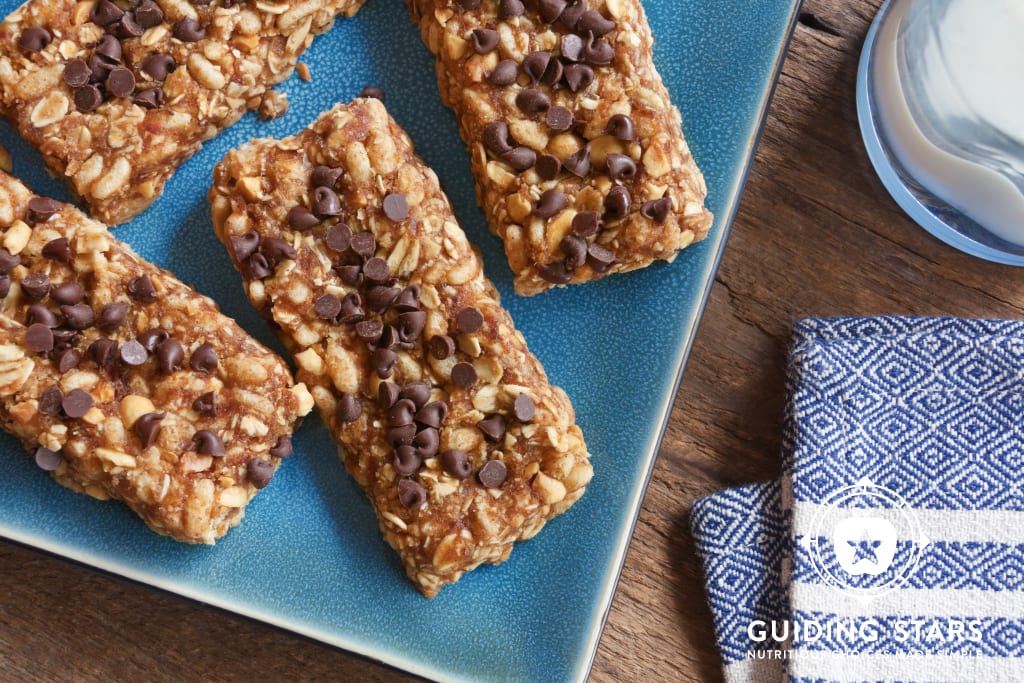
As schedules get busier with the approach of fall, there’s a rising interest in convenient snacks that do not compromise on nutrition. Snack bars check off a lot of boxes for consumers looking for on-the-go snacks. They are available in appetizing flavors, have a long shelf life, are packed in attractive single serving packaging, and are perceived as a healthy choice due in part to convincing health claims by manufacturers. However, in terms of nutrition, not all snack bars are created equal. For this edition of Surprising Stars, let’s discuss why there are less Guiding Stars-earning snack bars than some might expect and how to ensure your selection within these foods is nutrient dense.
Health Halo Effect
The health halo effect is when the healthfulness of a product is overvalued based on a single claim, such as low-fat. These claims can confuse consumers into thinking they are consuming a more nutritious food than they are. Snack bars are even categorized differently to appeal to certain demographics and eating occasions, which further proves there is a health halo surrounding these foods. They are called breakfast bars, energy bars, granola bars, gluten-free bars, nutrition bars, protein bars, and even women-only bars. They are also merchandised in supermarkets next to other products designed for fitness-conscious shoppers. Surely these bars must be healthy if they are marketed towards athletes. Right? Not quite. They can be full of added sugar and coated in chocolate, just like a candy bar.
Start with the Stars
It’s possible to find nutrient dense snack bars. Just look for the Guiding Stars to find them. Due to consumer demand, we’re seeing more Star earning options introduced to the market. These bars are made with whole grains, high in fiber, contain nuts with unsaturated fats, and fruit with natural sugars. They have a reasonable amount of added sugar. We evaluate their sodium content as well, so bars that earn Stars contain an appropriate amount. As you can see, we measure the overall nutrition of these products to determine if they are truly a good, better or best choice. Their nutrient density increases along with our 1, 2, and 3 Guiding Star rankings, a tool consumers can rely upon to navigate the confusing claims on these products.
Bars only go so far
As part of a healthy diet, even nutrient dense snack bars have limitations. Despite what their marketing might suggest, they should not commonly serve as meal replacements. Snack bars are certainly helpful to keep on hand for situations when you don’t have access to fresh foods and need an on-the-go snack to keep feeling full until the next meal. However, there are more nourishing ways to regularly eat a healthy mini meal, which is what our snacks should be in order to satisfy all our nutrient needs. Here are some pack your own snack ideas.